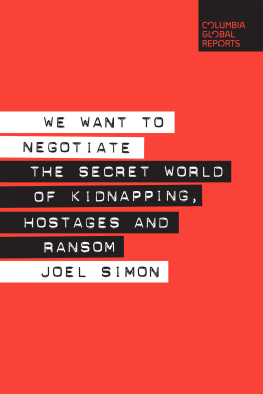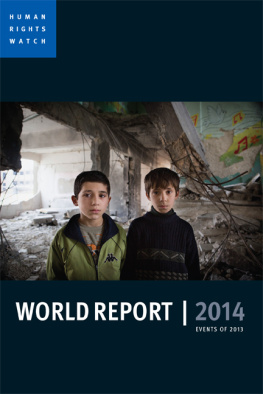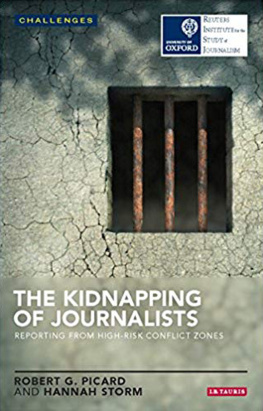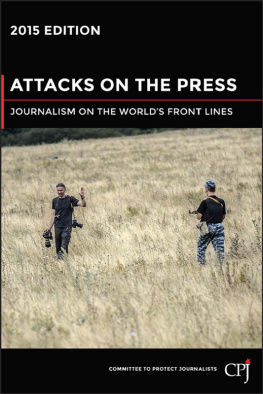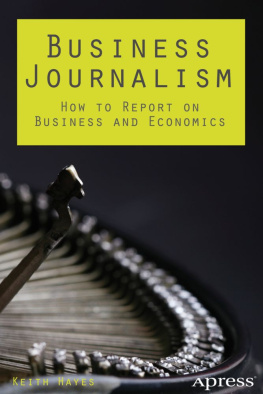THE NEW CENSORSHIP
Columbia Journalism Review Books
COLUMBIA JOURNALISM REVIEW BOOKS
Series Editors: Victor Navasky, Evan Cornog, Mike Hoyt, and the editors of the Columbia Journalism Review
For more than fifty years, the Columbia Journalism Review has been the gold standard for media criticism, holding the profession to the highest standards and exploring where journalism is headed, for good and for ill.
Columbia Journalism Review Books expands upon this mission, seeking to publish titles that allow for greater depth in exploring key issues confronting journalism, both past and present, and pointing to new ways of thinking about the fields impact and potential.
Drawing on the expertise of the editorial staff at the Columbia Journalism Review as well as the Columbia Journalism School, the series of books will seek out innovative voices as well as reclaim important works, traditions, and standards. In doing this, the series will also incorporate new ways of publishing made available by the Web and e-books.
Second Read: Writers Look Back at Classic Works of Reportage, edited by James Marcus and the Staff of the Columbia Journalism Review
The Story So Far: What We Know About the Business of Digital Journalism, Bill Grueskin, Ava Seave, and Lucas Graves
The Best Business Writing 2012, edited by Dean Starkman, Martha M. Hamilton, Ryan Chittum, and Felix Salmon
The Art of Making Magazines: On Being an Editor and Other Views from the Industry, edited by Victor S. Navasky and Evan Cornog
The Best Business Writing 2013, edited by Dean Starkman, Martha M. Hamilton, Ryan Chittum, and Felix Salmon
The Watchdog That Didnt Bark: The Financial Crisis and the Disappearance of Investigative Journalism, Dean Starkman
Beyond News: The Future of Journalism, Mitchell Stephens
THE NEW CENSORSHIP
Inside the Global Battle for Media Freedom
Joel Simon

Columbia University Press
New York
Columbia University Press
Publishers Since 1893
New York Chichester, West Sussex
cup.columbia.edu
Copyright 2015 Joel Simon
All rights reserved
Library of Congress Cataloging-in-Publication Data
Simon, Joel, 1964
The new censorship : inside the global battle for media freedom / Joel Simon.
pages cm. (Columbia journalism review books)
Includes bibliographical references and index.
ISBN 978-0-231-16064-3 (cloth : alk. paper)ISBN 978-0-231-53833-6 (e-book)
1. JournalismPolitical aspectsHistory21st century. 2. CensorshipHistory21st century. 3. Freedom of the pressHistory21st century. 4. Press and politicsHistory21st century. 5. JournalistsViolence against. I. Title.
PN4751.S56 2014
363.31097309'05dc23
2014012961
A Columbia University Press E-book.
CUP would be pleased to hear about your reading experience with this e-book at .
COVER DESIGN: Archie Ferguson
References to websites (URLs) were accurate at the time of writing. Neither the author nor Columbia University Press is responsible for URLs that may have expired or changed since the manuscript was prepared.
For Ingrid
Contents
The New Censorship was written over a three-year period, between 2011 and 2013. However, the book draws on my experience of more than fifteen years spent defending press freedom and on the insights, observations, and research of colleagues and collaborators over an extended period of time. Among the many leaders in the struggle for freedom of expression whose ides have informed my own are Agnes Callamard, Christophe Deloire, Annie Game, Jean-Francois Julliard, John Kampfner, Rony Koven, Alison Bethel MacKenzie, Julio Muoz, Ricardo Trotti, and Aidan White.
While I have consulted a wide variety of sources and experts in framing my analysis, it should come as no surprise that I rely heavily on the press freedom research carried out by the extraordinary staff at the Committee to Protect Journalists. The contributions of CPJ experts are acknowledged in the endnotes notes of each chapter, but I would like to recognize the support of key individuals. Among them are Robert Mahoney, Bill Sweeney, Carlos Laura, Elisabeth Witchel, Jean-Paul Marthoz, and zgr ret, who all read drafts and provided commentary and insight. Id also like to acknowledge the guidance and support of my predecessors as executive director: Anne Nelson, Bill Orme, and particularly Ann Cooper, who provided encouragement, support, and detailed feedback on various drafts.
During my time at CPJ, I have had the opportunity to work closely with four different board chairman, Gene Roberts, Dave Laventhol, Paul Steiger, and Sandy Rowe. All provided outstanding leadership, and they taught me from their own perspective what journalism means and why it matters. The support of CPJs board of directors allowed me to explore the complex issues raised in this book. I benefited tremendously from debates and discussions at board meeting, over coffee, or while carrying out CPJ missions. I would like to recognize those board members who contributed directly to this project either by agreeing to be interviewed or by sharing insights and expertise, including Michael Massing, Sheila Coronel, Dave Marash, Jim Goodale, Franz Allina, Kati Marton, Josh Friedman, Rebecca MacKinnon, Rajiv Chandrasekeran, Clarence Page, Anne Garrels, Victor Navasky, and Jacob Weisberg.
Others members of the CPJ extended family who provided insights and support include Aryeh Neier, David Rohde, Eric Newton, Joel Campagna, Michael Shifter, Danny OBrien, and Dan Gillmor. And Im forever indebted to friends and colleagues who read chapters and provided feedback, including Andy Blauvelt, Lee Bollinger, Daniel Dombey, Nisid Hajari, Jonathan Lethem, Colum Lynch, Peter Noorlander, Eric Siblin, and Jon Williams. Finally Id like to offer a huge thanks to Greg Fay, my research assistant on this book, who went beyond the call of duty over and over.
No one could ask for a more committed and dedicated agent than Richard Parks. Im grateful to my editor, Philip Leventhal, who directed me with clarity and focus through various rounds of revision, and his colleagues at Columbia University Press.
Inevitably, this book was written on the fly in hotel rooms, airplanes, trains, coffee shops, and hotel lobbies. This is why I am particularly grateful to those who provided some stability and quiet time for writing and reflecting. They include Arlene Abramovitch (Montreal and Bretton Woods, New Hampshire); Jerry and Marcia Simon (Ashland, Oregon), and Barbara Simon (Los Angeles). I am also grateful to the writer-in-residence program at the Ace Hotel.
The lastand most profoundthank-you must go to my family: my amazing daughters, Ruby and Lola, and my wife, Ingrid Abramovitch. Ingrid contributed as an editor and a cheerleader, insisting always that I push on and never succumb to doubt or self-pity. This book would not have been possible without her love and support, and that is why it is dedicated to her.
We arrived in Pakistans capital, Islamabad, on May 1, 2011, two days in advance of our scheduled meeting with President Asif Ali Zardari. Bob Dietz, a veteran journalist who had covered wars in Somalia and Lebanon and edited a magazine in Hong Kong before becoming the Asia program coordinator at the Committee to Protect Journalists, had done the advance work, arranging our schedule and preparing our agenda. Paul Steiger and I were the other members of the team. Steiger was the managing editor at the Wall Street Journal in 2001 when the reporter Daniel Pearl was kidnapped and killed in Pakistan. It was this terrible experience that led Steiger to become involved in the fight for global press freedom and eventually to become the chairman of CPJ. In May 2007, Steiger stepped down from the
Next page

